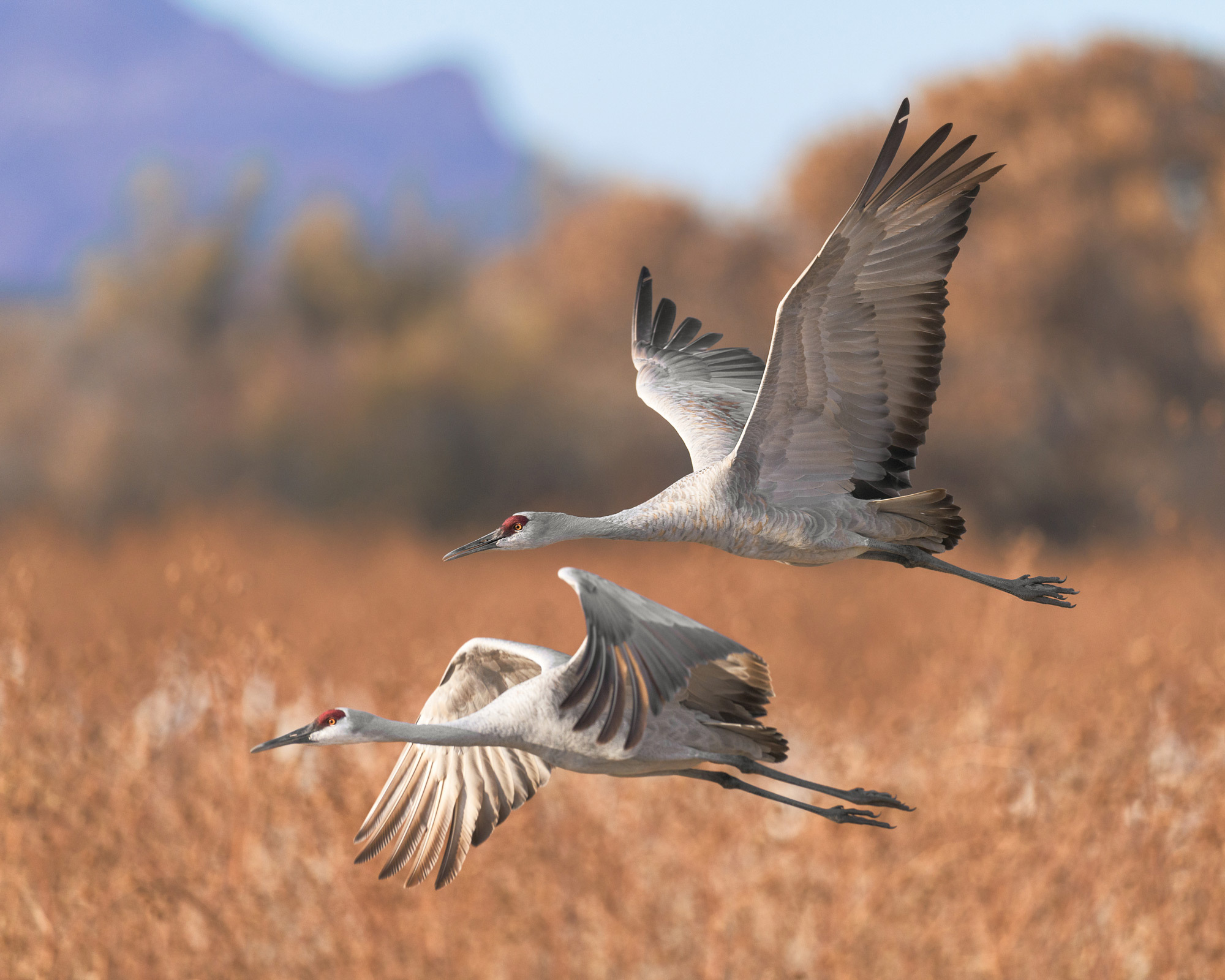Sandhill Crane
The Sandhill Crane is a large, elegant bird, known for its graceful movements and resonant calls that echo across North America's wetlands and grasslands. While admired for its beauty and its intricate migratory patterns, in certain culinary circles, the Sandhill Crane is celebrated for its unexpectedly rich and flavourful meat.

More on Sandhill Crane
About
The Sandhill Crane, characterized by its tall stature, grey plumage, and distinct red crown, is a migratory bird often seen in large flocks, especially during migration seasons, where they travel from Alaska down through Alberta to their wintering grounds in the Southern United States. They primarily inhabit open landscapes such as wetlands, grasslands, and meadows. In Alberta, these cranes can be observed in the province's eastern parts, where they frequent wetlands and farmlands during their migratory travels.
About
For millennia, Indigenous communities across North America, including those in Alberta, have respected and admired the Sandhill Crane, not only for its graceful presence but also as a source of sustenance. The bird's presence in ancient rock paintings and stories underscores its cultural significance. With the arrival of European settlers, the crane continued to be hunted, both for sport and food. Over time, however, with rising concerns about bird populations, regulations around crane hunting have tightened.
Ways To Cook
Often referred to as the "ribeye of the sky," Sandhill Crane meat has surprised many with its depth of flavour, often drawing comparisons to quality cuts of beef rather than poultry. The breast meat, in particular, is a delicacy. It can be marinated and grilled, resulting in a steak-like texture and flavour profile. Many Albertan hunters and chefs recommend a simple preparation to allow the unique taste of the meat to shine through—perhaps just a sprinkle of salt and pepper before grilling or pan-searing. Some also favour slow-cooking methods, like braising, to bring out the meat's tenderness. Given the bird's lean nature, it's often suggested to avoid overcooking to retain juiciness.
